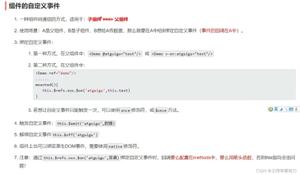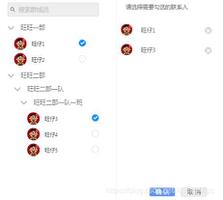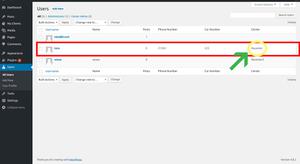C#定义并实现单链表实例解析
本文以实例详细描述了C#定义并实现单链表的过程及原理。一般来说C#定义并实现单链表,代码包括构成链表的结点定义、用变量来实现表头、清空整个链表 、链表复位,使第一个结点成为当前结点、判断链表是否为空、判断当前结点是否为最后一个结点、返回当前结点的下一个结点的值,并使其成为当前结点、将当前结点移出链表,下一个结点成为当前结点等内容。
具体实现代码如下所示:
using System;
using System.IO;
// 构成链表的结点定义
public class Node
{
public Object data;
public Node next;
public Node( Object d )
{
data = d;
next = null;
}
}
public class List
{
// 用变量来实现表头
private Node Head = null;
private Node Tail = null;
private Node Pointer = null;
private int Length = 0;
//清空整个链表
public void deleteAll( )
{
Head = null;
Tail = null;
Pointer = null;
Length = 0;
}
//链表复位,使第一个结点 成为当前结点
public void reset( )
{
Pointer = null;
}
//判断链表是否为空
public bool isEmpty( )
{
return (Length == 0);
}
//判断当前结点是否 为最后一个结点
public bool isEnd( )
{
if (Length == 0)
throw new System.Exception( );
else if (Length == 1)
return true;
else
return (cursor( ) == Tail);
}
//返回当前结点的下一个结点的值, 并使其成为当前结点
public Object nextNode( )
{
if (Length == 1)
throw new System.Exception( );
else if (Length == 0)
throw new System.Exception( );
else
{
Node temp = cursor();
Pointer = temp;
if (temp != Tail)
return (temp.next.data);
else
throw new System.Exception( );
}
}
//返回当前结点的值
public Object currentNode( )
{
Node temp = cursor( );
return temp.data;
}
//在当前结点前插入一个结点, 并使其成为当前结点
public void insert( Object d )
{
Node e = new Node( d );
if (Length == 0)
{
Tail = e;
Head = e;
}
else
{
Node temp = cursor( );
e.next = temp;
if (Pointer == null)
Head = e;
else
Pointer.next = e;
}
Length++;
}
//返回链表的大小
public int size( )
{
return Length;
}
//将当前结点移出链表,下一个结点成为当前结点
//如果移出的结点是最后一个结点,则第一个结点成为当前结点
public Object remove( )
{
Object temp;
if (Length == 0)
throw new System.Exception( );
else if (Length == 1)
{
temp = Head.data;
deleteAll( );
}
else
{
Node cur = cursor( );
temp = cur.data;
if (cur == Head)
Head = cur.next;
else if (cur == Tail)
{
Pointer.next = null;
Tail = Pointer;
reset( );
}
else
Pointer.next = cur.next;
Length--;
}
return temp;
}
//返回当前结点的指针
private Node cursor( )
{
if (Head == null)
throw new System.Exception( );
else if (Pointer == null)
return Head;
else
return Pointer.next;
}
//链表的简单应用举例
public static void Main( )
{
List a = new List();
for (int i = 1; i <= 10; i++)
a.insert( new IntPtr(i));
Console.WriteLine(a.currentNode( ));
while (!a.isEnd( ))
Console.WriteLine(a.nextNode( ));
a.reset();
while (!a.isEnd( ))
{
a.remove( );
}
a.remove( );
a.reset( );
if (a.isEmpty( ))
Console.WriteLine("There is no Node in List!");
Console.WriteLine("You can press return to quit!");
try
{
// 确保用户看清程序运行结果
Console.Read( );
}
catch (IOException e)
{
}
}
}
以上是 C#定义并实现单链表实例解析 的全部内容, 来源链接: utcz.com/z/354209.html








